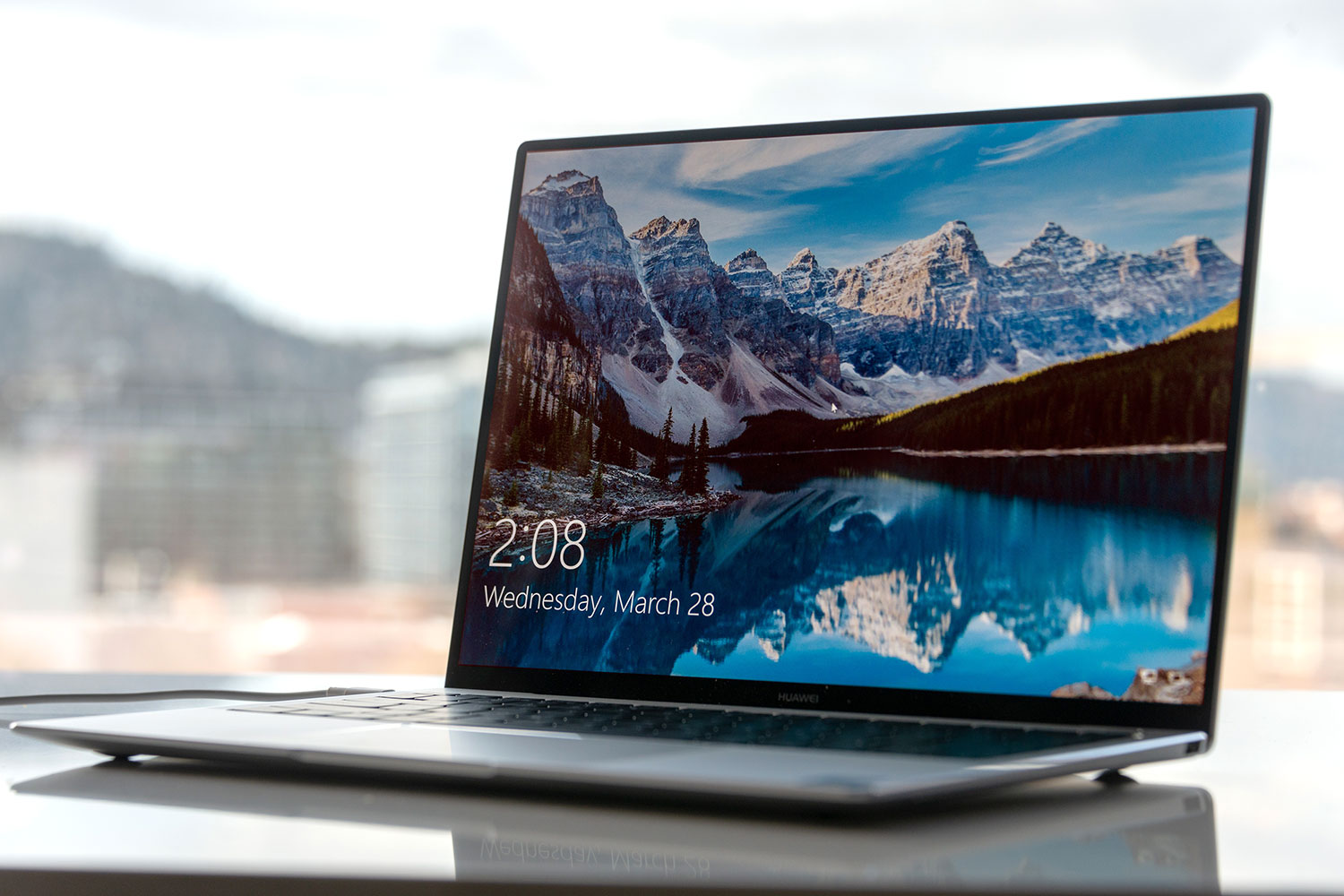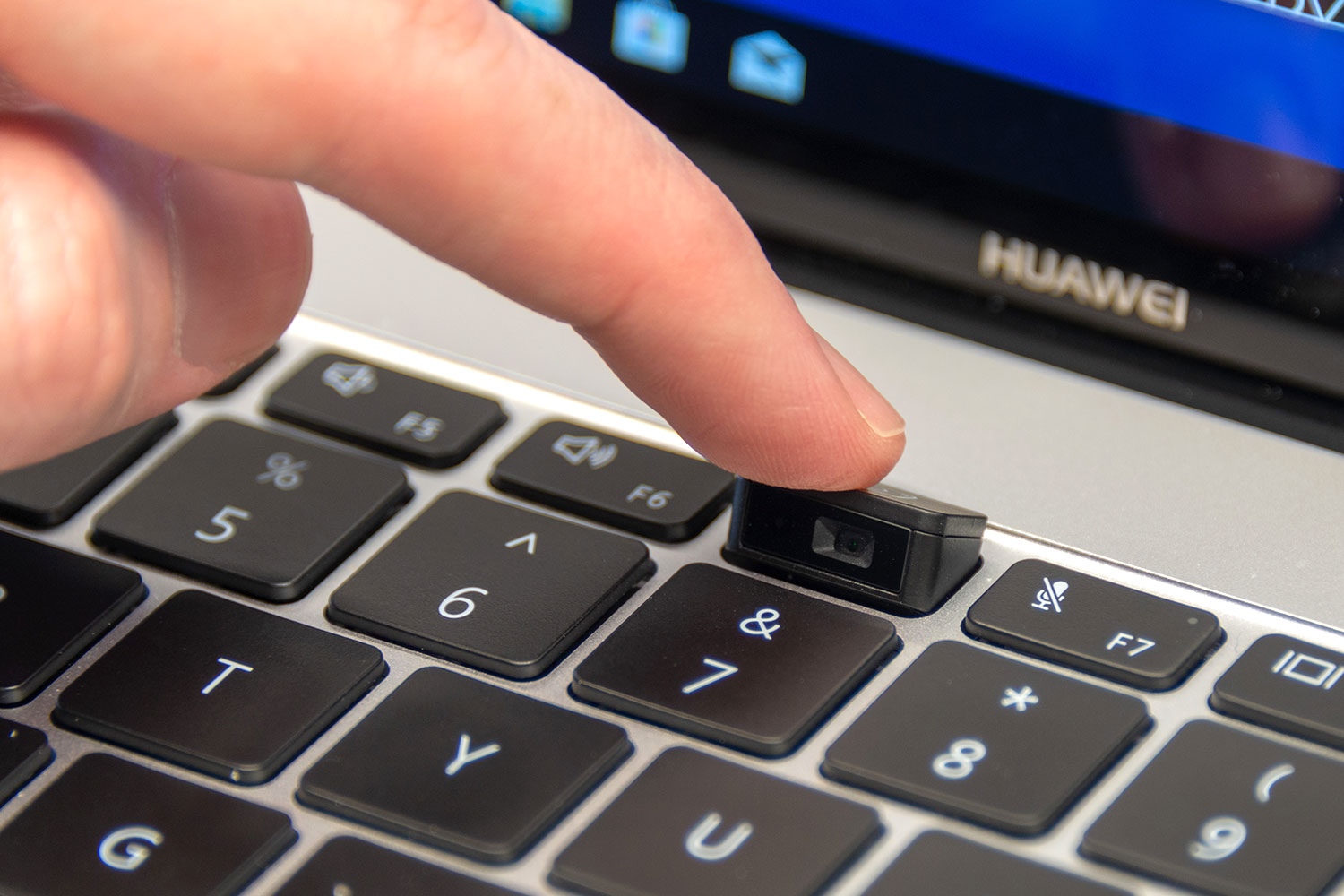
The Dell XPS 13 has been a trend-setting laptop and one of our favorites for many years. The latest 2018 version is no different and is typically the laptop we’d recommend for just about anyone, so as long as they aren’t a gamer. The Huawei MateBook X Pro is a beast of very similar capabilities, and it comes with a dedicated graphics chip to boot. It’s versatile, powerful, and looks fantastic.
In this head-to-head where we pit the Huawei MateBook X Pro against the Dell XPS 13, which comes out on top? They’re both trim, stylish laptops targeting the mid-range, but which is truly the best?
For a look at more of our favorite
Specifications
| Huawei MateBook X Pro
|
Dell XPS 13
|
|
| Dimensions | 12 x 8.5 x 0.57 inches (0.19 at thinnest) | 11.9 x 7.8 x 0.46 inches (0.3 at thinnest) |
| Weight | 2.93 pounds | 2.67 pounds |
| Processor | 8th Generation Intel Core i5, i7 | 8th Generation Intel Core i5, i7 |
| RAM | 8GB or 16GB | 4GB, 8GB or 16GB |
| Graphics | Nvidia MX150 with 2GB GDDR5 | Intel HD 620 |
| Display | 13.9-inch FullView | 13.3-inch InfinityEdge |
| Resolution | 3,000 x 2,000 | 1080p or 4K |
| Storage | 256GB, 512GB NVMe PCIe SSD | 256GB, 512GB, 1TB SSD (PCIe optional) |
| Networking | 802.11ac, Bluetooth 4.1 | 802.11ac, Bluetooth 4.2 |
| Ports | USB-C, Thunderbolt 3, USB-A, Headset | USB-C, 2 x Thunderbolt 3, Headset, microSD |
| Webcam | 720p webcam | 720p webcam |
| Operating System | Windows 10 | Windows 10 |
| Battery | 57.4 watt-hours | 52 watt-hours |
| Price | 1,500 euros (US price unknown) | $1,000+ |
| Availability | Unknown | Now |
| Review | Full review: 7/10 | Full review: 9/10 |
Design
Both the Dell XPS 13 and Huawei MateBook X Pro have been disruptive in their own way. Where the Dell laptop has repeatedly redefined what it means to be a good-looking, mid-range laptop, the X Pro and its predecessors have brought MacBook-like styling to a fully fledged Windows system and it’s been an effective strategy.
Both continue to be visual trendsetters in their latest guises and look fantastic for it. Both are thin and compact, with clever weight distribution. The XPS 13 is slightly trimmer across the board, with a slight weight reduction, but the X Pro has a thinner profile in places and a larger display to factor in. Both surround their own panels with extremely trim bezels though, bringing an edge-less look to the compact laptop scene.
In terms of connectivity, the Huawei laptop has a slight edge, offering both USB-C and USB-A ports for better legacy support, though it does lack the microSD card slot of the Dell alternative. Their webcams are more comparable. They are both 720p resolution and are mounted below the monitor, so give a slightly odd viewing angle. Although neither are great, the X Pro’s is hidden away underneath a faux F-key like a pop-up car headlamp and we found it extremely unflattering.
It’s hard to pick an outright winner in this category as both
Winner: Draw
Performance
One of the hallmarks of the mid-range in the laptop market is that it makes major leaps in power over entry level models that are priced well below $1,000. Both
Storage-wise, both have 256GB and 512GB high-speed SSD options, though the XPS 13 can be upgraded to a terabyte of storage space using the PCIexpress solution. That NVMe-style drive is standard in the X Pro.
The comparable specifications means that both systems offer comparable general computing performance, but where the X Pro really pulls ahead is in 3D rendering. It includes a dedicated graphics chip: an Nvidia MX150. Although we did note in our review that this MX150 does seem to underperform compared to some of its contemporaries, it still far outstrips the capabilities of the XPS 13’s on board Intel HD graphics core and is enough to give the X Pro the nudge in this competitive category.
Winner: MateBook X Pro

Display
The Huawei MateBook X Pro’s display very much takes after the Surface Book 2, in that it offers an uncommon 3,000 x 2,000 resolution in a 3:2 aspect ratio. That means that you’ll see more of a website when browsing online, but it also means that watching movies results in larger black bars on screen.
In contrast the Dell XPS 13 has a more traditional 1080p or 4K panel which we thought looked nice in our testing, but didn’t exactly blow us away. While it’s aspect ratio is more commonly supported, it really falls behind the Huawei X Pro in terms of brightness and contrast.
The Dell laptop does have a little more choice when it comes to display — which gives it a little more pricing flexibility — but touch support doesn’t come as standard. With only one display ‘option,’ the MateBook X Pro has multi-touch support whether you’re interested in it or not.
While we’d still suggest Apple’s MacBook Pro 13 is the class leader in this space, in this head to head, the MateBook X Pro comes out on top.
Winner: MateBook X Pro
Portability
One of the most welcome changes to the new Dell XPS 13 was in its redesigned structure. That weight redistribution makes it easy to carry and hold and is more noticeable than the slight weight reduction it went through in the generational change. While that did result in a slightly smaller battery with slightly less life overall, it still lasted well over 13 hours in our 1080p video loop test. That result isn’t quite as strong with the
In comparison, the Huawei MateBook X Pro is similarly portable and similarly powered. It’s a little bit heavier and a little bit thicker — though thinner at its thinnest point — than the XPS 13, but still extremely portable. Its battery technically has more juice in it, but it doesn’t last as long as the XPS 13, offering just 10 hours in the 1080p video loop test and an hour less in the web-browsing test too.
That’s not to say it’s battery life is bad. Indeed it will also give you a full eight-hour work day and a little more, but it’s just not quite as portable as the Dell alternative.
Winner: XPS 13
Pricing and availability
Although the XPS 13 is available from $1,000, that version comes with just 4GB of RAM. A fairer comparison with the MateBook X Pro would be the $1,200 version, which packs a Core i5 CPU and 8GB of
The last-generation XPS 13 is also worth considering, as it starts at a more affordable $800, though comes in a last-generation form-factor and with last-generation hardware.
In comparison, the MateBook X Pro has yet to be officially released. Likewise, we haven’t been given an official U.S. price tag for the system either. A direct conversion of the 1,500 euro starting price would work out to around $1,850, while our review unit was 1,700 euros, or $2,090. While we would expect the MateBook Pro X to be a little pricier than the XPS 13 due to its on board GPU and slightly larger display, until we have more concrete pricing information or a launch date, it’s hard to judge it in this category.
For now, the XPS 13 is the more affordable and only option available.
Winner: XPS 13
The Dell XPS 13 is still the king

With such a tight race between these two
The MateBook Pro X is a great laptop and if it has favorable pricing when it launches in the U.S., could be a firm competitor for other
The XPS 13 on the other hand, can match it where it counts and beats it on battery life and pricing, which in the mid-range of the market are two of the most important factors. It’s still our favorite.
Overall winner: XPS 13
Editors' Recommendations
- Dell XPS vs. Dell Latitude: here’s how to decide
- Dell XPS 14 or XPS 16? Here’s how to know which to buy
- Best laptop deals: Save on the Dell XPS 14, MacBook Pro 16 and more
- Dell vs. HP: Which laptop brand is best for your needs?
- The 5 best laptops for photo editing and photographers






